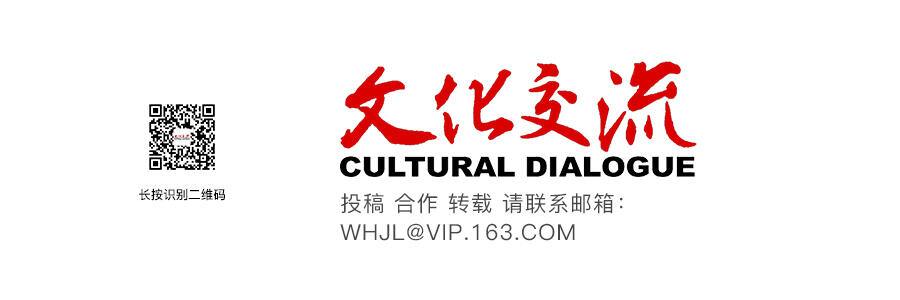中川周士的手工香槟木桶,与松下的IH技术结合,可以给香槟酒降温;八木隆裕的茶叶罐,打开盖子,可以发出乐音;两片电风扇叶片转动带出的微风,穿过竹编的网,就好像是穿越竹林的山野之风……
在北京观看这场“京都和风家电展”之前,很多人无法想象,传承几代人的传统手工技艺,借助科技的翅膀,还能焕发出这样的时尚力。而带着冷冰冰面孔的现代科技,植入传统的工艺与手工的温度后,居然变得如此诗意,如此富有想象力。
3年前,笔者带着思考前往日本,考察和记录了日本许多传统匠人的故事;回到中国,又调研了许多非物质文化遗产传承人以及新匠人的故事,后来出了一本书《造物之美》。此书引发的话题与热度,到今天依然在延续。其中,两位匠人的故事,足以让我们窥见,不论是过去与现在,每一位顶尖匠人的背后,都是技艺与态度的双重修炼。
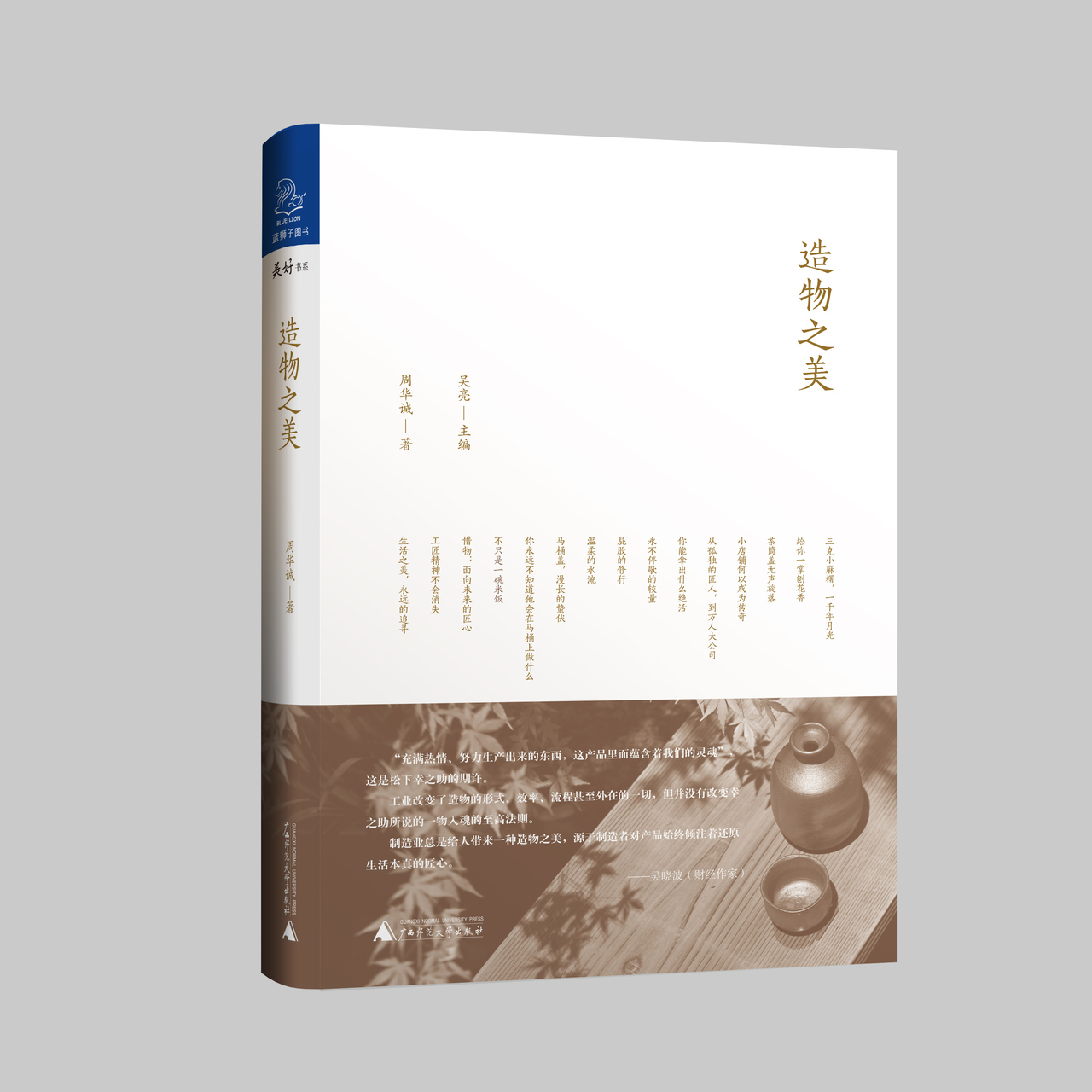
一个香槟桶,售价9万日元
中川周士的家,安在日本滋贺县大津市乡下的琵琶湖边,一条铁道线从附近穿过,周围是连绵的青山和稻田。
铁道线旁边的房子,既是他的家,又是他的工作坊。
当我拿起中川周士手工做的木碟子,可以看到刀锋在木器上留下的细腻痕迹。一刀一刀,像是画家的素描笔迹。
这样的木器,就好像大自然中本来就有的一样。而中川周士,不过是把它从一堆木材里取了出来。
过去,很多日本家庭是用大铁锅蒸米饭,然后把蒸好的米饭盛到饭桶里,端到桌旁,再盛到小碗里。要是在冬天,还会把饭桶放到藤制或棉布制的筐里保温。
传统的日式木桶,是将木片围成圈,最后在外围以金属条或竹片固定。通过精湛的细木工,不用铁钉和黏合剂,便能制作出牢固而没有缝隙的木桶。
这种技艺,在日本也是历史悠久——早在约700年前的室町时代就已形成。至江户时代,几乎家家户户都可见这种木桶。
中川周士的父亲中川清司,曾有过辉煌的履历。
中川木工算是京都的木桶老字号。他们从不使用钉子,制作中用到的有高野罗汉松和神代杉,也有在泥或火山灰中掩埋了2000年以上的杉木。不同木片的形色、收缩率皆不同,拼合时,就需要清晰地了解木头的特性和纤维结构,以及可产生的器具美感。
2001年,中川清司因为精湛的技艺,被认定为木工的“人间国宝”。
但是现在,随着时代与生活环境的变化,在日本人的生活中已经很少用到木盆、木桶之类的东西了。做好的木盆和饭桶都没有人要。这样,木桶匠人就挣不到钱了。在当下的日本,依然在从事手作木桶和拥有此技术的作坊,从多年前的250家减到今天的不出3家。
中川木工是其中最负盛名的一家。但是,他们也面临着怎样应对新变化的难题。
中川周士从父辈手中接过担子,他想让木头重新介入现代生活里来。
中川周士1968年生于京都,毕业于京都精华大学美术学院的雕塑专业。毕业后,师从父亲中川清司,学习木桶、指物、刳物、辘轱等技术。
为了不让手中的技艺消失,他必须做出创新的商品。面对西方美学与工业设计的强烈冲击,中川木工的坚守与创新,成为现代设计的灵感之源。
他想到了香槟桶。平时在饭店里所见,常是不锈钢香槟桶。那种不锈钢香槟桶放入冰块,再放入香槟,半小时后金属的桶外壁会起雾,然后结成水珠,桶底会形成一摊水。而木制香槟桶,木制的外壁不起雾、不结水珠,桶底也是干的,不会积水。这就是木制香槟桶的独特性。
他开始做香槟桶,用长了上百年的木材——桧木,按一种弧度锯成片,用刨子刨光。他手中的木桶,不再是传统的那个木桶。那是一件现代艺术作品。
这个木桶用20块木片拼成,木片与木片之间的缝隙小到0.1毫米,不能漏出光来,木片之间打孔用竹棍儿连在一起,不需要胶水粘。从上部看下去,香槟桶的俯视截面是橄榄型的,中间宽,两头尖。如此精细,令人赞叹,简直是艺术品。这样一个香槟桶,售价92400日元,折合人民币约7000元,而且还供不应求。
这样的香槟桶,被世界顶级香槟酒唐培里侬的老板看中,他们在香槟桶壁上烫上了唐培里侬的Logo,光他们一家的销售价就约合210万元人民币。
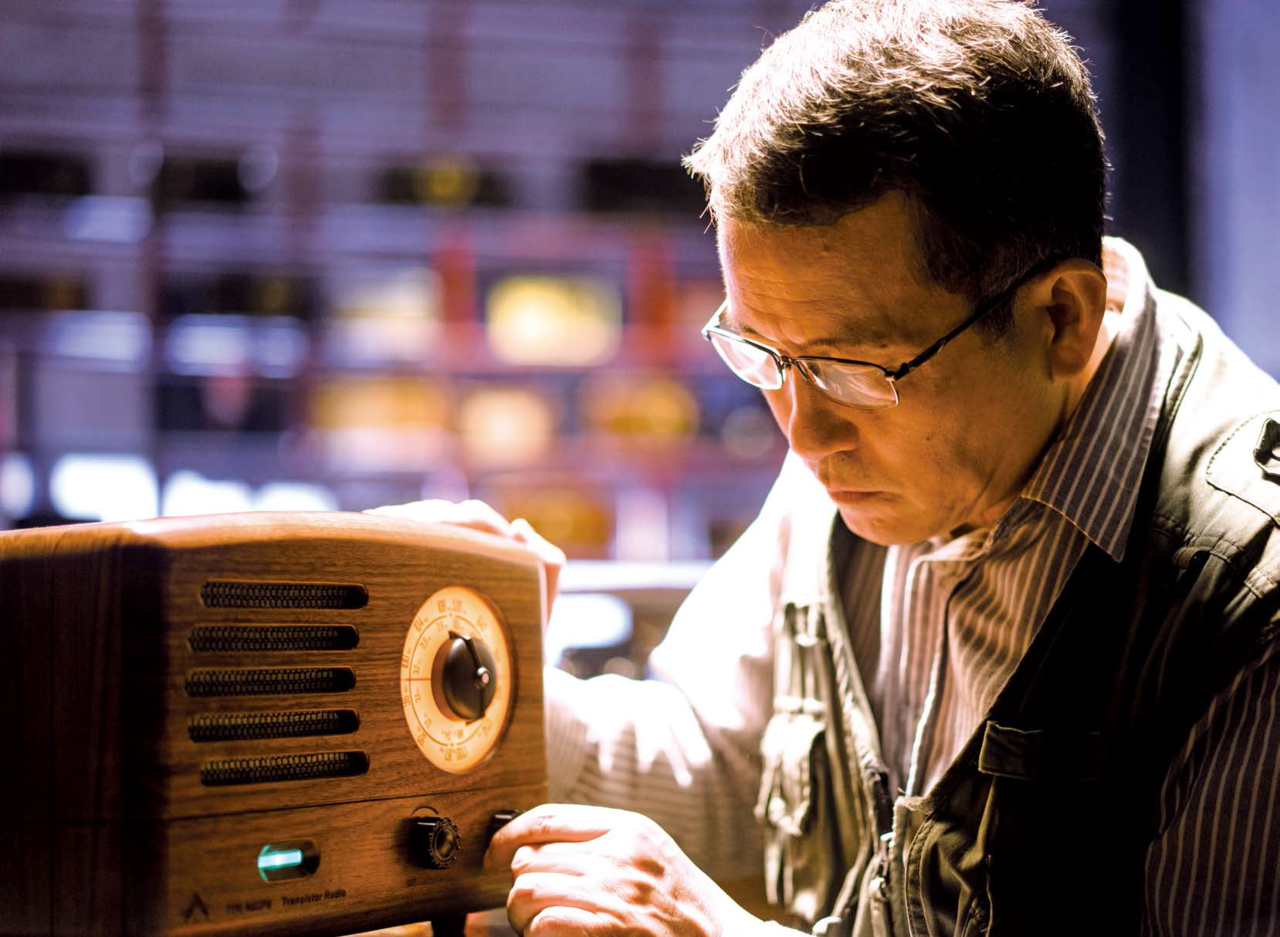
手工收音机,卖出1000多万元
在这次“京都和风家电展”上,还有一位中国匠人——曾德钧。他自小对收音机着迷,热爱收音机及电台文化,深信这是人类史上的声音传奇,希望有温度、有故事的声音能够继续传递。为此,他逆时代而上,重拾电台黄金时代的经典,创立“猫王收音机”。
曾德钧很早就是“收音机专业户”了。
他喜欢收音机,从小就喜欢。他自己用零件攒过小矿石机,自己装过半导体机,也去买过电子管机,生产各种各样的收音机。
当他把一堆零件组装起来,盘腿坐在收音机前,听着机子里传出遥远的声音时,那种沉醉感令他着迷。
到了60岁,为了圆梦,他和那些年轻创客一样,每天背着十几斤的双肩包,为自己的创业项目不断钻研、奔波。历时10年设计的“猫王”收音机,终于因其复古的造型和饱满的音质,在某众筹平台上一举成名。
他是一个固执的人。
上世纪80年代以后,他所做的工作与音响相关。虽然收音机也一直伴随着他,但是对收音机音质开始不满意了,甚至认为收音机的音质也许就这样。直到2000年以后,接触了国外的优秀收音机,发现其音质是那么美妙动人、富有魅力,甚至在声音风格上形成了自己独有而且是音响不能替代的文化。
从那时起,他开始梦想做出一台性能优异、声音优秀的收音机。
他曾设计出了国内第一台Hi-Fi商品化胆机,人们称他为“中国胆机之父”。他对于音质是非常挑剔的,从收音机特有的“滋啦滋啦”,到清晰悦耳的调音过程,这里有着独特的复古意味。对于收音机的外观打造,也遵循着温润的手工气质。
老曾发起众筹,得到资金和用户的支持之后,他开始专注于“猫王系列”的研发,型号从便携式“猫王mini”到立柜式“猫王bigger”,价格从几万到几百。为了适应新的需求,他又在这个型号上加进了蓝牙功能。
有用户说,老曾的收音机弥漫着强烈的个人风格。
也有人不理解老曾为什么要做猫王收音机,因为似乎从商业角度来说,收音机并没有太大的销量。但是对于老曾来说,销量从来不是他要顾虑的东西,本质上他更像是一个艺术家、一个工匠。
说起猫王收音机,一般人可能不太了解,但国内发烧友圈子对这款收音机早已热捧。这款收音机由纯实木手工打造,外形仿古,声音自然而通透,凝聚了设计者的匠心。
好的东西,自然会凝聚热爱它的人。越来越多的朋友,通过各种途径知道了曾德钧和他的猫王收音机。人们着迷于这台收音机,并在各自的朋友圈里散发。可以说,在这个时代,猫王收音机缓慢地构筑了一个属于它自己的“朋友圈”。
自2013年开始,曾德钧和他的团队就积极地参与到互联网的众筹中去,此后他们做了十多个众筹项目,获得了1000多万元的销售额,也获得了大家的关注。同时,他们也不断调整自己的产品思路。此后,猫王收音机的销量一路大涨,成为文艺群体的必备生活用品。
“这个时代是一个产品过剩的时代,市场不缺产品,因此我们所做的产品,不是从需求出发,而是从如何引起和满足大家的兴趣出发,从如何满足大家对生活方式的要求出发。”
匠人对物品有感情,而不像商人一样只将它看作挣钱的产品。猫王收音机正是如此,它是曾德钧梦想的延续,又凝聚着互联网时代曾德钧对品牌的重新思考。
在它身上,我们看见了曾德钧一以贯之的匠心,以及匠心在这个时代的持续生长。
June 25, 2019 celebrated the first anniversary of the founding of Matsushita Memorial Museum in Beijing. A series of activities such as workshops, talk shows, and exhibitions was held there to mark the occasion. One of the exhibitions portrayed home appliances made by Japanese masters. On display were interesting examples of finest craftsmanship, imagination and perfectionism. For example, a handmade champagne bucket with a special cooling system using Panasonic IH technology, a tea canister that can play music like a music box, a two-blade electric fan that produces soft breeze that makes one feel like walking through a bamboo forest…Each of the products displayed is a piece of art that illustrates the magic of weaving modern materials and technology into traditional Japanese handicraft to produce something perfectly functional and super beautiful.
The activities at the museum breathed some soothing, cool air into the sizzling summer heat of Beijing. A talk show on July 19 at the museum featured two guest speakers. One was Shuji Nakagawa, a Japanese woodwork master, and the other Chinese craftsman Zeng Dejun. I presided at the show.
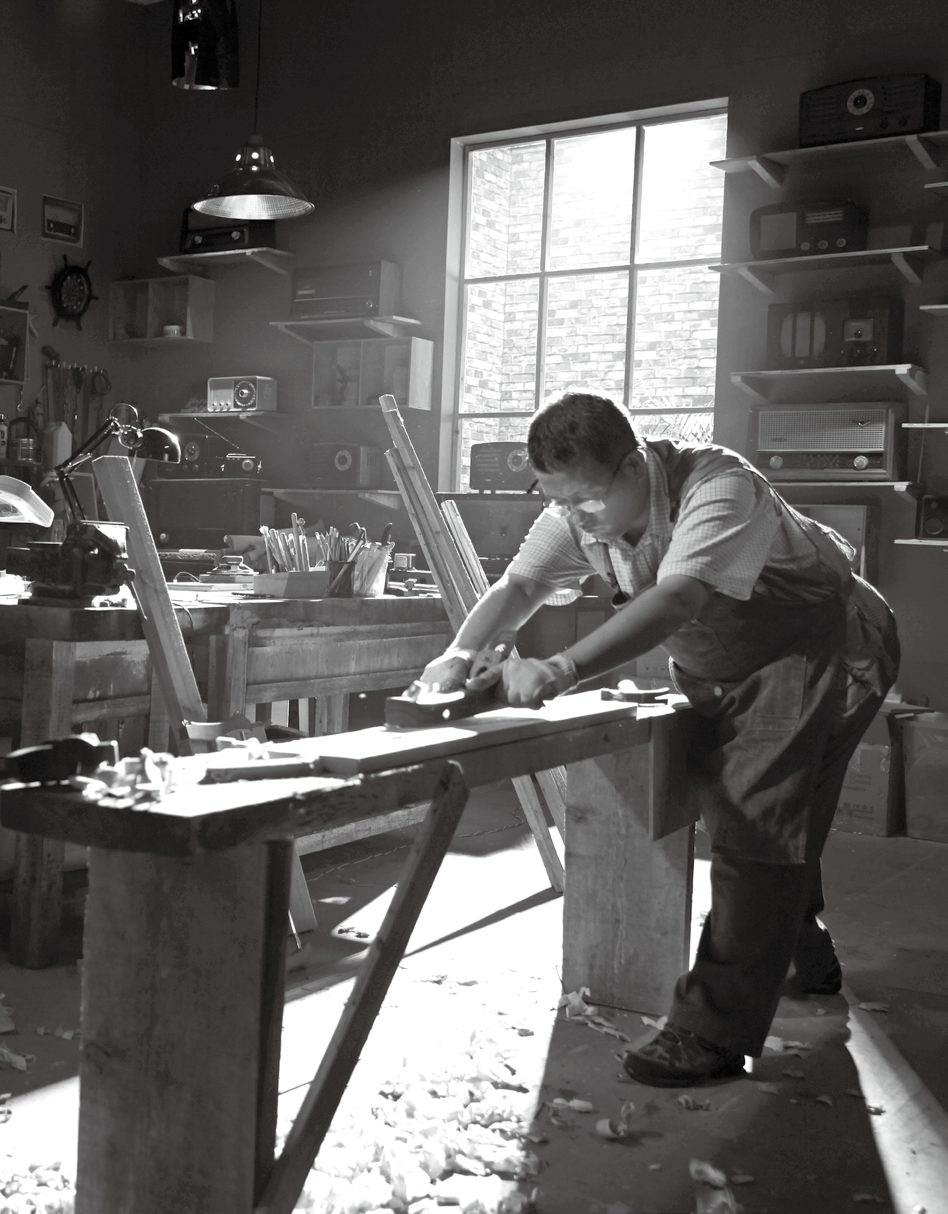
Shuji Nakagawa
Shuji Nakagawa’s home-cum-workplace is a house in the suburbs of Otsu City, Shiga Prefecture in Japan. In the lakeside house with a gorgeous view of mountains and paddy fields, the craftsman produces all kinds of woodwork using traditional Japanese carpentry skills that eclipse all modern, high-tech inventions. “For craftsmen, the best materials are made by Nature, and all you have to do is to follow the natural rules,” he says.
His wood rice barrel shows the die-hard carpentry that has a history dating back more than 700 years to the Muromachi Period of Japan, running from approximately 1336 to 1573. The wood barrels are perfectly seamless and stunningly durable, without using any iron nail or adhesive.
The master learned the skills from his carpenter father, who ranks among Japan’s best craftsmen and “a national treasure”. The time-honored wood barrel brand in Kyoto, Nakagawa Carpentry is best known for its high-quality wood pieces put together without using nails. The studio’s hypercritical eye for wood materials also ensures the superb aesthetic beauty and uniqueness of each product.
The studio’s super quality rice barrels, however, have long lost popularity because of drastic changes of the lifestyle of modern Japan, making Shuji Nakagawa, who has taken the relay baton from his father, think about new possibilities in the stark market reality that the number of traditional barrel makers in Japan has dropped from more than 250 to 3.
After graduation from Kyoto Seika University with a degree in sculpture, Shuji Nakagawa spent years learning the trade from his father and thinking about innovation. He started with champagne buckets, believing that wood is a better material than the stainless steel type widely used in hotels and restaurants. The result is a beautiful piece of art that sells for 92,400 yen (about 7,000 yuan) and has proved a great market success. Nakagawa’s invention also caught the attention of Dom Perignon for its superb quality and chic, minimalism design. The logo of this world-famous vintage champagne brand embroidered onto the bucket also adds immense value to the Japanese studio and added a new dimension to the family glory of Nakagawa Carpentry.
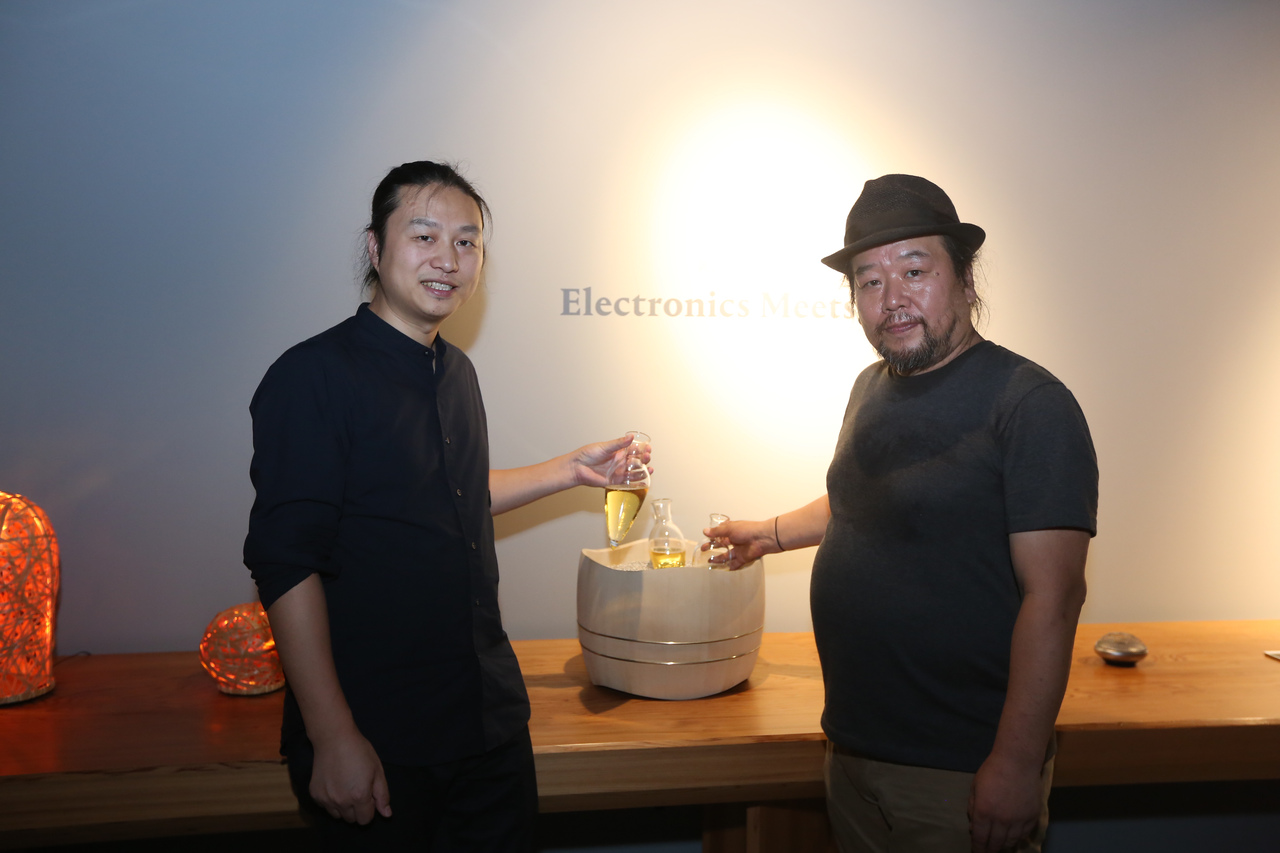
Zeng Dejun
One of the participants of the exhibition is Zeng Dejun, a vintage radio collector whose passion for this little sound-making box began when he was a little child. For him, the joy and satisfaction of sitting in front of a radio put together by himself using whatever components he could lay his hands on and listening to the sound produced by the machine is beyond description. He turned his childhood hobby into something he made a living with in the 1980s, and has since stayed in the acoustic world to explore new possibilities of sound.
Zeng’s “radio dream” came true when he turned 60. His “Elvis Presley” Radio series that took him 10 years to finalize the design includes a range of types such as “Mini” and “Bigger”. The series have won a following.
It takes a real radio enthusiast to appreciate all the effort Zeng Dejun put into “Elvis Presley”, a purely hand-made piece of art that best explains the meaning of “craftsmanship” and delights all senses. Sales volume has never been a concern for Zeng. He is an artist that makes things which make him truly happy.
“The market is never short of anything. What we strive to do is to make something that truly inspires the lifestyle of people today.”
Craftsmanship, essentially, is the interplay of skills and the right attitude. It is the combination of two hands, sharp eyes and determined pursuit of perfection, which is something Nakagawa Shuji and Zeng Dejun have in common. What a true craftsman dreams to do is to make everyday life a better one.
Three years ago, I spent some time in Japan looking for stories about traditional Japanese artisans, and put together a book titled that triggered heated discussion after I came back in China. In a broader sense, it is a topic that should forever motivate all professionals in all walks of life. is all about concentration and dedication, about love for life, and about holding fast to dreams.
